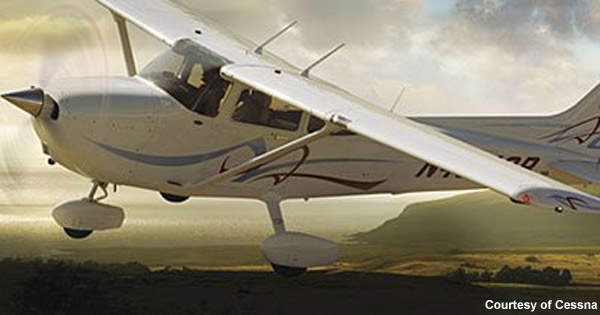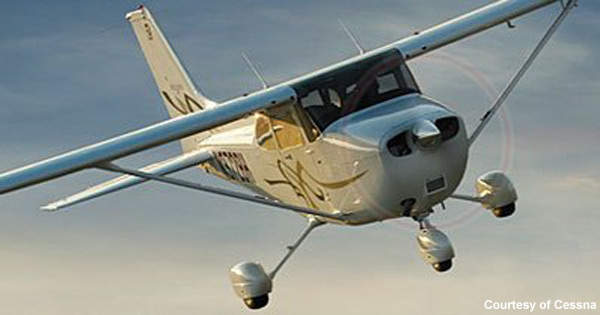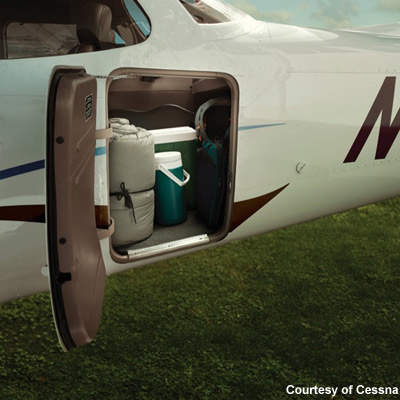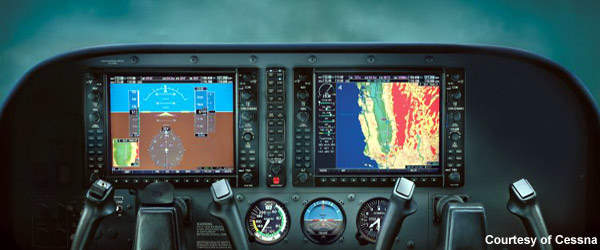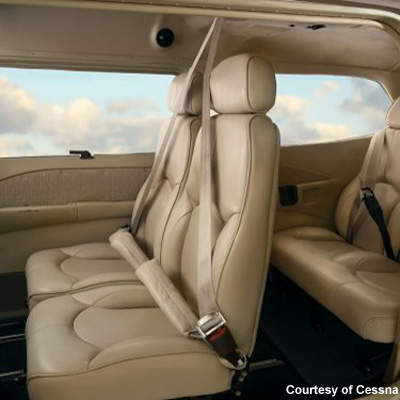The Cessna 172 Skyhawk SP and TD (turbo diesel) follow a 172 manufacturing tradition of over five decades. Since its first flight in 1955 and its subsequent first delivery of a production aircraft in 1956, Cessna has manufactured over 43,000 172s for customers located in nearly every country in the world. A military version of the 172, the T-41 Mescalero, is used by the US armed forces as a trainer aircraft.
The Skyhawk is a four-seat aircraft that can operate with one or two pilots.
The aircraft is a single turboprop and is typically used for personal and small business use, or as a trainer; Cessna has nearly 300 Cessna Pilot Centres (CPCs) worldwide.
The model 172S is certified to the requirements of US FAA Federal Aviation Regulation Part 23 through amendment 23-6, including day, night, VFR (visual flight rules) and IFR (instrument flight rules). TD engine manufacturer Thielert has an FAA supplemental type certificate.
Deliveries and orders
Cessna has delivered over 43,000 Skyhawks to date. In August 2009, Cessna delivered five new Cessna 172S Skyhawks to Northwestern Michigan College for training students.
The University of North Dakota ordered 13 Cessna 172S Skyhawks for flight training at the John D Odegard School of Aerospace Sciences. The school had previously received a delivery of 25 vehicles in 2008. In September 2009, Saint-Petersburg State University of Civil Aviation ordered 12 new Cessna 172S Skyhawks for flight aviation training programme. In February 2008, Chimes Aviation ordered 20 172 Skyhawks.
Cessna made the first deliveries of the TD version in 2008.
Skyhawk design
The Skyhawk 172 has rugged, shock-absorbing main landing gear and hydraulically actuated disc brakes for stable ground handling and manoeuvrability. The vehicle also has high-intensity discharge (HID) lamps.
The Skyhawk SP comes with the Garmin GFC 700 fully integrated flight control system featuring airspeed hold, over-speed protection, pitch hold and coupled VNAV. The system provides precise lateral and vertical guidance and capabilities.
The vehicle features Garmin’s G1000 glass cockpit with synthetic vision technology that helps to show the aircraft’s position as a real-time 3D image. It displays synthetic terrain, flight hazards, flight-path markers and highway-in-the-sky on the avionics panel.
The vehicle has a standard 12V power converter for laptops and other electronics devices. It features on-demand cabin lighting and tinted rosen sun visors for reducing cockpit glare and eye fatigue.
Turboprop engines
The Skyhawk SP is powered by a Lycoming IO-360-L2A single-piston engine developing 134.22kW at 2,700rpm driving a McCauley fixed-pitch two-blade metal propeller.
The Skyhawk TD is powered by a Thielert Centurion 2.0 single-piston engine developing 115.58kW at 2,300rpm driving a composite constant-speed three-blade propeller.
Cessna claims that up to 30% less fuel will be consumed by the diesel engine; the TD uses Jet A fuel. The TD model has an improved take-off and climb performance and a reduced noise signature.
Skyhawk flight deck
The SP model features OEM-installed Bendix / King and Garmin avionics.
However, both the SP and TD models of the Skyhawk are available (standard equipment on the TD) with the Garmin G1000 glass cockpit, which provides all primary flight, engine and sensor data in real time on two 26.4cm active matrix LCDs.
The G1000 features XM WX satellite weather with XM satellite radio, which can be activated by subscription. It is integrated with a transponder and dual navigation / communication / WAAS / GPS equipment.
Cabin
The 4.40m³ cabin is configured for four people, one or two pilots and a two-seat bench seat. The cabin is accessed via a 1.03m-high by 0.88m-wide (on average) door. The baggage area and baggage net are aft of the rear seat, and is accessed via a 0.56m-high by 0.39m-wide door.

